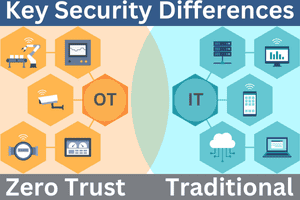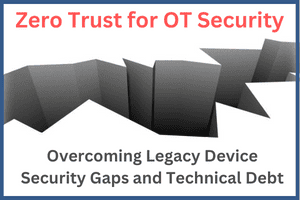Differences between Zero Trust, Network Segmentation, and Microsegmentation for OT Cybersecurity
Zero Trust, Network Segmentation, and Microsegmentation important OT cybersecurity strategies, but they have different goals and approach to security. This post will discuss how these approaches are used and how they are different.
ZERO TRUST
Zero trust is a security model that assumes that all network traffic, whether it originates from inside or outside the network, should be treated as untrusted. In a Zero trust environment, every access request is authenticated and authorized before access is granted, regardless of the location or identity of the requestor. Zero trust security model is based on the principle of least privilege, which means that users and devices are only granted the minimal access necessary to complete their tasks. A Zero trust security model can be used to protect devices against external and internal threats. A key benefit of Zero trust is that it can stop cyberattacks from happening (or propagating) in real-time since network devices are protected against unauthorized access or interactions.
NETWORK SEGMENTATION
Network segmentation is a method of dividing a computer network into smaller, interconnected segments, or subnets, to limit the scope of a security breach and make it more difficult for an attacker to move laterally within the network. This can be accomplished through a variety of methods, such as using VLANs, firewalls, or other network-level security devices. By creating smaller, isolated subnets, network segmentation can help to reduce the attack surface of a network and limit the potential damage that can be caused by a security incident. Network segmentation does not stop cyberattacks or protect individual devices, but only limits the reach of an cyber intrusion to the affected segment.
MICROSEGMENTATION
Microsegmentation is a more granular approach to network segmentation. It involves breaking down a network into even smaller segments, often at the level of individual hosts or applications. Microsegmentation can be accomplished through a variety of methods, such as using software-defined networking (SDN) or security groups. The goal of microsegmentation is to create a more fine-grained security posture, where each segment is protected by its own security policy, and access is tightly controlled.
Veridify Security has implemented DOME with a NIST-compliant Zero Trust framework. Please contact us to lean more or schedule a demo on how all of your OT devices can be protected.
—
Blog Post Summary – A condensed list of our blog posts



